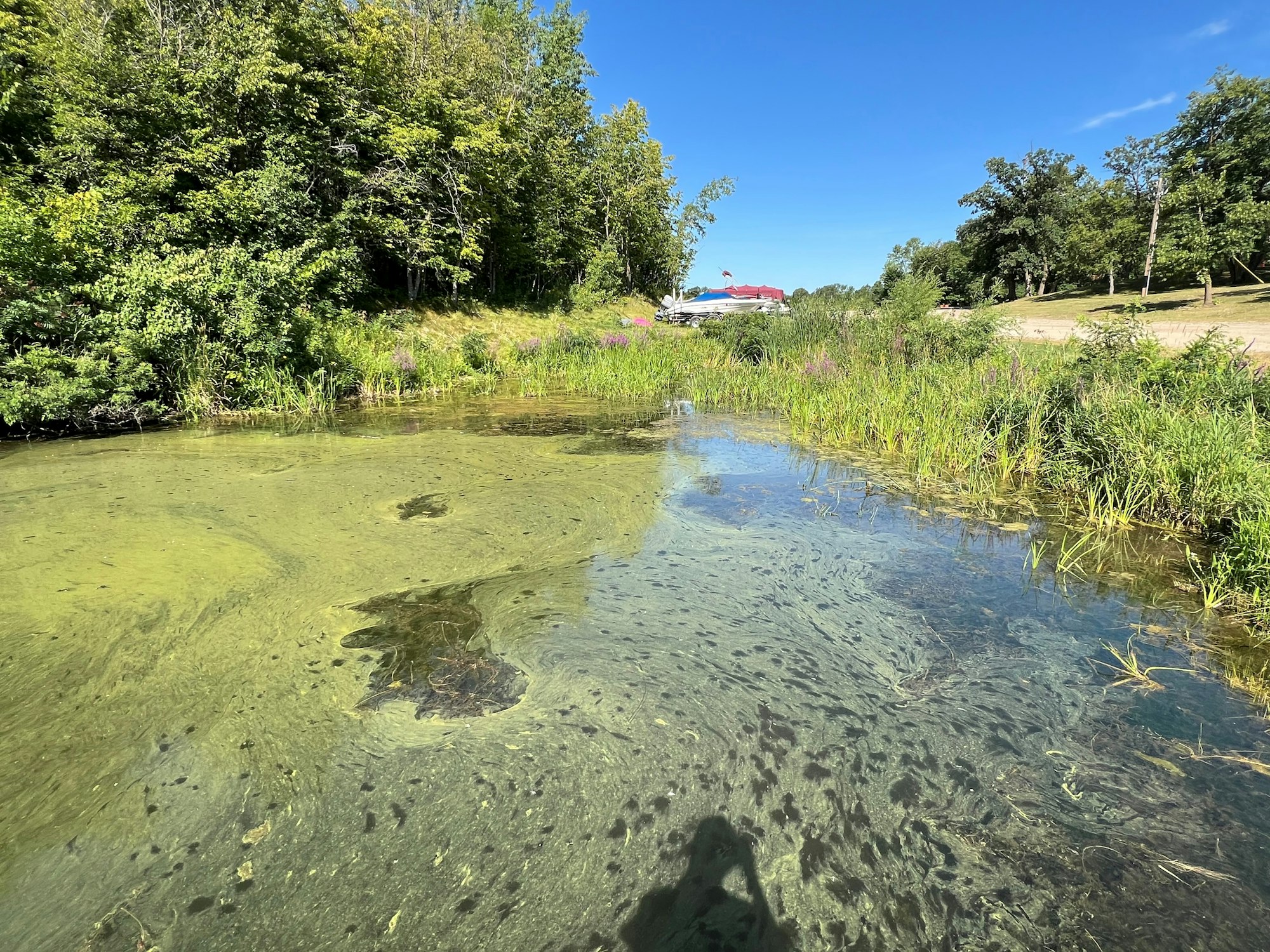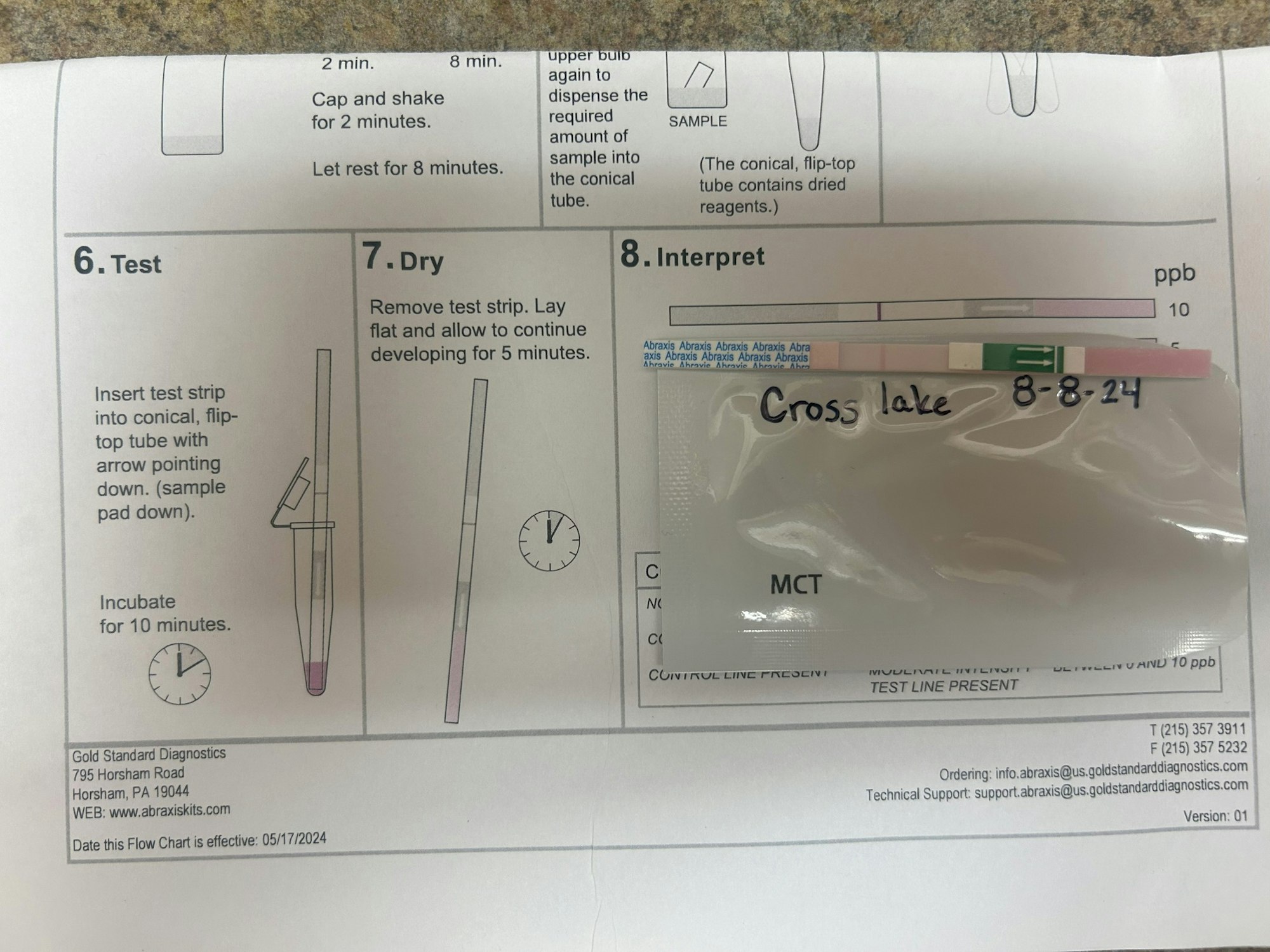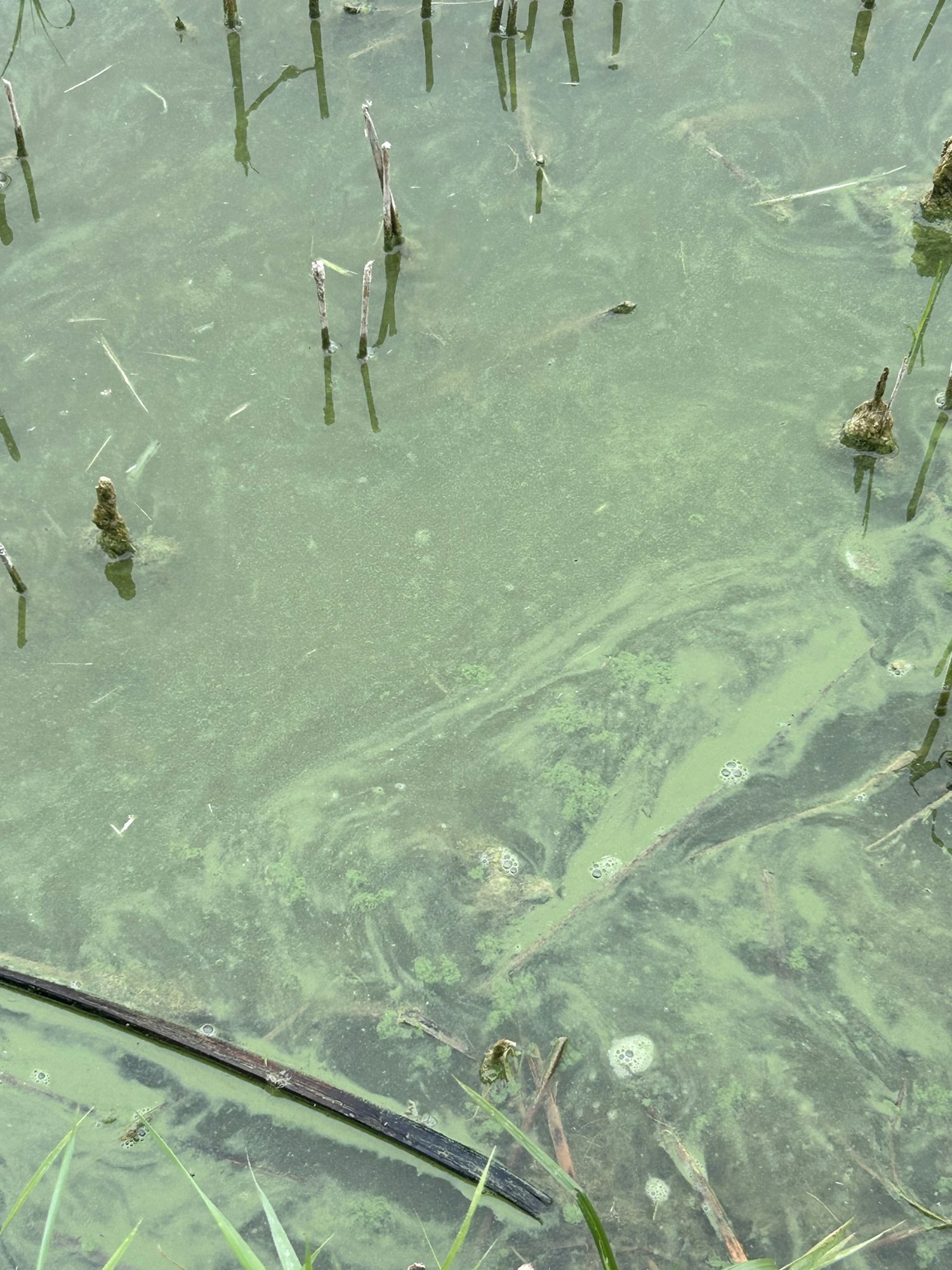Blue Green Algae
The Red Lake Watershed District began testing water in the Mud River and other lakes/rivers for blue-green algal toxins (microcystins and cyanotoxins) in response to dog deaths that were caused by ingesting blue-green algae. The District uses Abraxis kits to test the water for algal toxins. Previous blooms have been connected to high water temperatures and high concentrations of nutrients.
The Mud River at the Grygla city park and water has been tested for blue-green algae during periods of high temperatures and low flow during the months of July through September. No positive test results for blue green algae have been discovered in the Mud River since regular monitoring began.
Since the discovery of blue-green algae or algal toxins in lakes and reservoirs during the summer of 2018, regular sampling and monitoring has been conducted to discover algal blooms/toxins and learn more about the conditions that may lead to algal blooms. District staff regularly sampled for algal toxins in Maple Lake (once every two weeks at the public beach) because that was location of the highest concentration of algal toxins that the District had previously measured within a lake sample. If measurable concentrations are found in Maple Lake, the district is prepared to sample other shallow eutrophic lakes to find other cases of measurable or high algal toxins. The EPA set the safe/unsafe threshold for microcystin algal toxins at 8 ppb in 2019 and had reportedly considered 4 ppb in 2016. So, we can use those numbers to help us interpret our algal toxin test results.
What is Blue Green Algae?
Blue Green Algae is actually a form of bacteria called cyanobacteria. They are normally present in bodies of water in Minnesota and not usually harmfull unless a 'Bloom" occurs.
What is a Bloom?
A bloom occurs when the bacteria grows at an uncontrolled and fast rate. Causing large areas turn to a pea soup or green paint color. The bloom is triggered by the increase of heat and nutrience in shallow body of water.
Photo Examples:

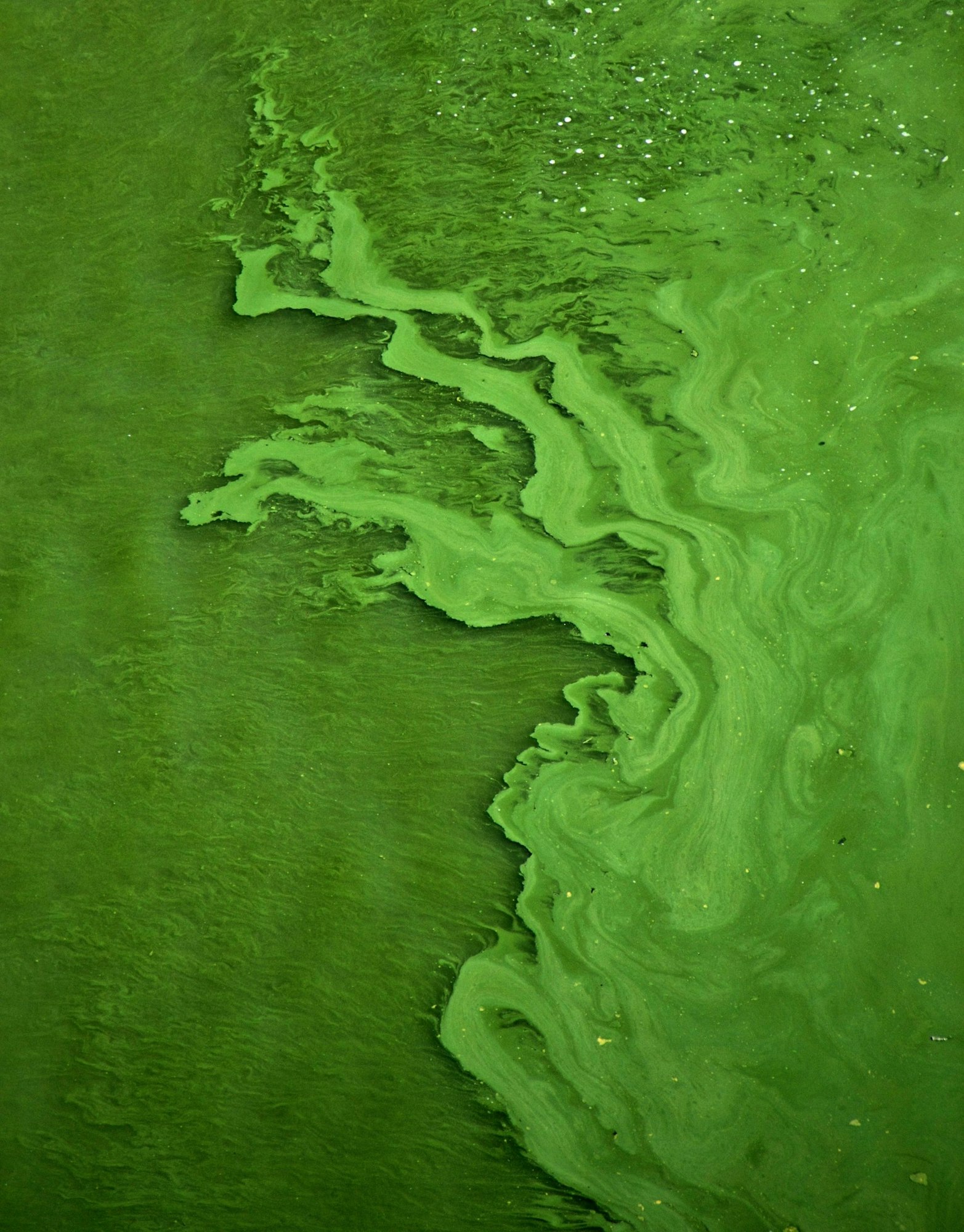
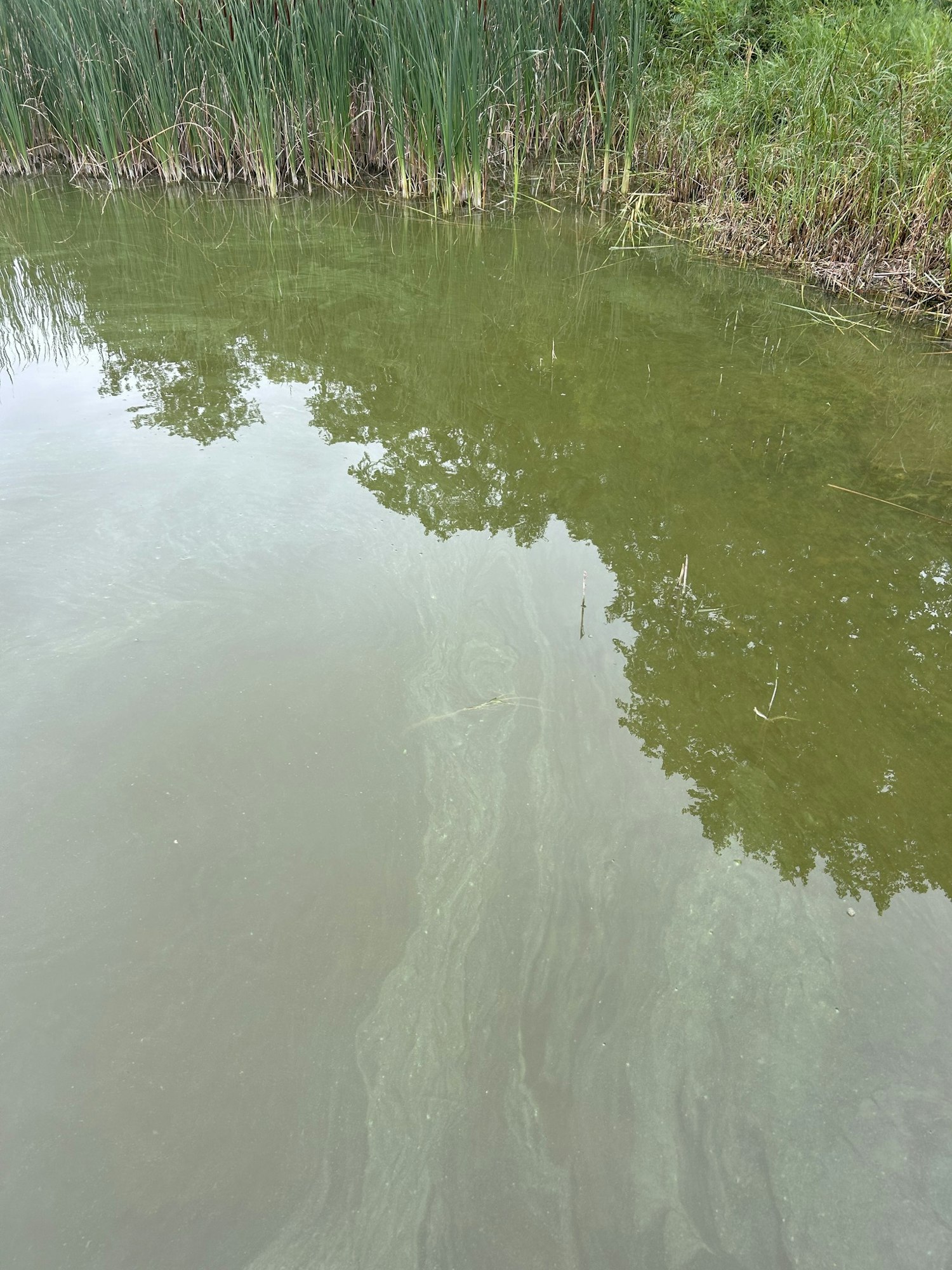
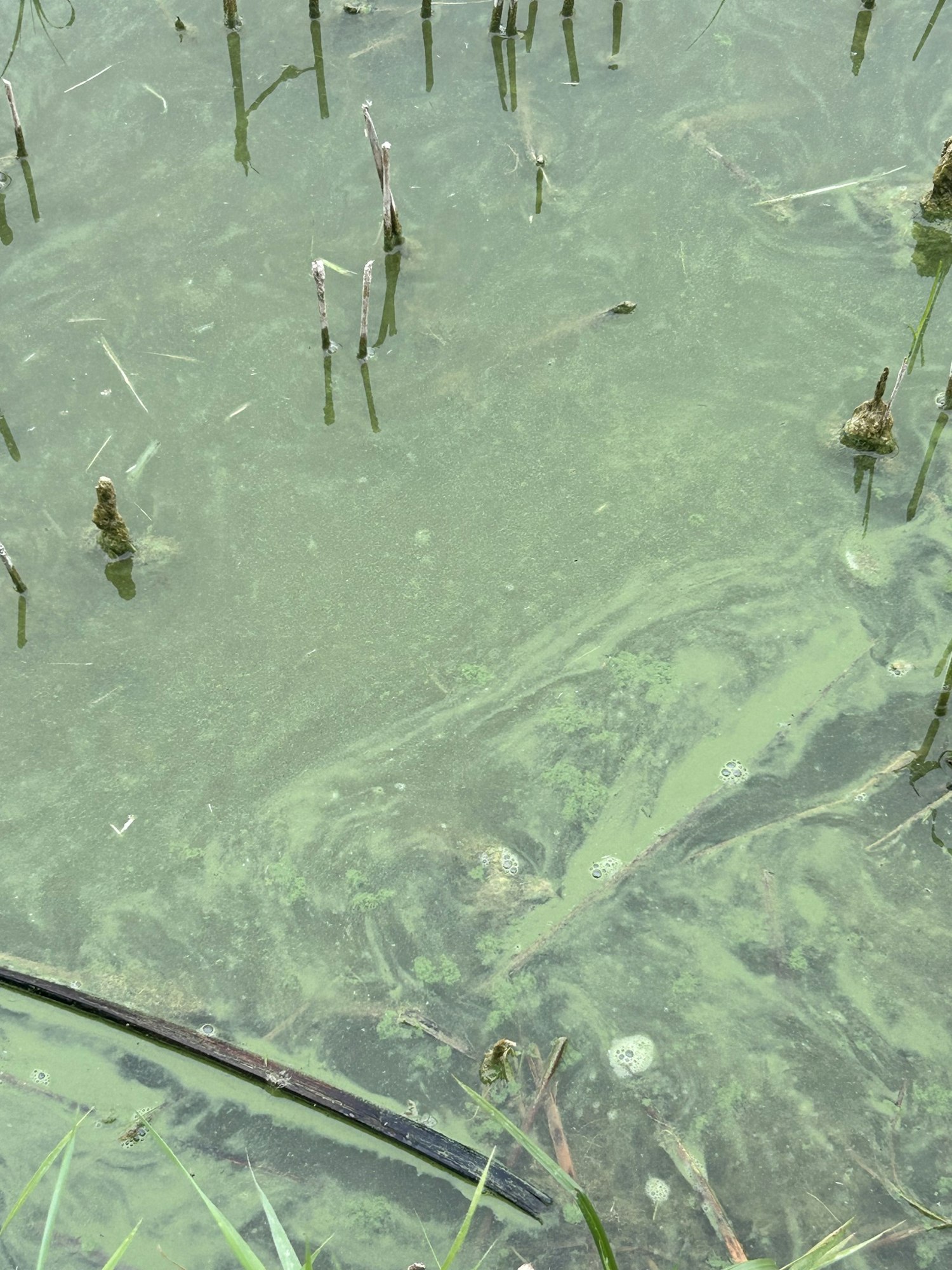
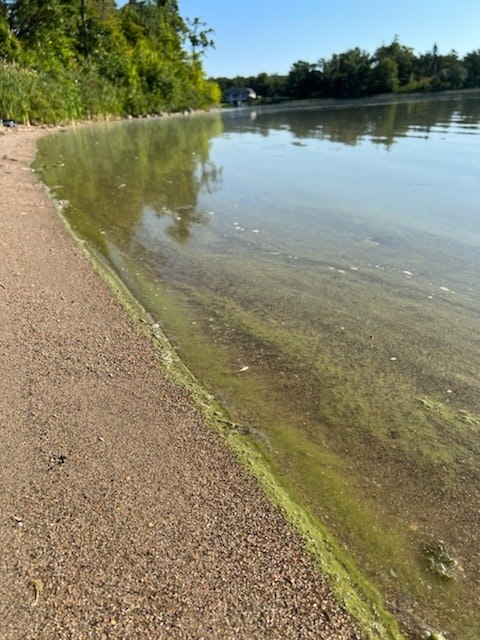





If you would like to report a sighting or have questions about blue green algae, please call us at 218-681-5800 OR email at RLWD@redlakewatershed.org
Algae Testing:
Maple Lake
The marina at Polk County Park was sampled on June 27th, July 28th, and August 13th in 2025. The June sample indicated that a barely detectable concentration of algal toxins may be present (1 ug/L or less). Toxins weren't detectable in the July and August samples.
Cross Lake
The Tilberg Park beach was sampled on June 27th, July 28th, and August 13th in 2025. The June sample was toxin-free. However, the July sample contained a concentration that was too high to be measured with our test (>10 ug/L). The August sample had 5-10 ug/L algal toxins.
Oak Lake
No signs of blue-green algae were found in Oak Lake in "jar-test" samples collected on June 27th and July 28th.
Sampling for algal toxins began on Wednesday, July 10, 2024. The Maple Lake test result indicated that a low level of toxins may be present (around 1 ppb). Follow-up samples were collected from other, nearby shallow lakes on July 11th. Algal toxins were present in the sample from Oak Lake - between 2.5 and 5 ppb.
Maple Lake was sampled on July 19th. No algal toxins could be detected in the sample. Only a small amount of scattered blue-green algae particles were revealed by the "jar test" for that sample.
The August 2, 2024 sample from Maple Lake was very clearly negative for algal toxins - great news for the weekend!
Cross Lake (Main Basin) was also scheduled for blue-green algae testing this summer due to attention brought to the lake by the Turtle Connection Cross Lakes Subwatershed Project, recent water quality results showing potential impairment from excess phosphorus, and 2023 aerial photos that are indicative of a blue-green algae bloom. On 8/8/2024, RLWD staff were able to visit the lake to collect a sample from Tilberg Park. There was visual evidence of a blue-green algae bloom and the test result showed that there was a >10 ppb concentration of algal toxins (more than what the test could measure). Local residents were notified and signs were posted at the park.
On August 12, 2024, RLWD staff found evidence of a blue-green algae bloom at the Polk County Park marina on Maple Lake. A sample of the water was tested for microcystin algal toxins. Like last week's sample at Cross Lake, this sample had a higher concentration than what our test could measure. The bloom was still present, even on the beach side of the park, on 8/13/2024. The beach at the Polk County Park on Maple Lake had a too-high-to-measure algal toxin concentration (>10 ppb), as did Riverside Park on the north end of the lake. The "East Beach," however, did not have detectable levels of algal toxins. This indicated that recreation was relatively safe in open water, but people and pets should stay out of the water in areas like bays where blue-green algae could accumulate.
On August 19th, 2024, the Cross Lake blue-green algae bloom had gotten bad enough that it had formed a "crust" on the water at the access. The "crust" went away after that, but the bloom was still very much present on August 27th and September 6th.
The high levels of blue-green algae at the Maple Lake County Park Marina and beach were still very much present on August 19th. The bloom progressively dissipated through the August 27th, September 6th, and September 10th visits.
On September 10, 2024, algal toxins at the Maple Lake Marina were detectable, but had dropped to relatively safe levels (about 1 ppb). Cross Lake, however, still maxed-out (>10 ppb) the algal toxin test on September 10, 2024.
Cross Lake was still quite green during a September 20, 2024 visit, though it had less of the bright-green and turquoise coloration of blue-green algae and more more of a drab green like a green algae bloom. With the arrival of cooler weather, signs were removed for the season near the end of September. Additional investigative monitoring will be needed within the next several years to identify the sources of the excess nutrients that are contributing to the blue-green algae blooms in Cross Lake. Cross Lake will likely be listed as impaired due to excess nutrients after the MPCA's 2017 water quality assessment and will require a total maximum daily load (TMDL) to describe how water quality can be restored.
There was insufficient space in the summer 2023 RLWD staff schedule for much proactive sampling for blue-green algae toxins. Staff responded to complaints from Cable Lake (7/17/2023), Robinhood Drive in Thief River Falls (Red Lake River, 9/8/2023 - 9/11/2023), and the "Golf Course Bridge" crossing of the Thief River north of Thief River Falls (6/27/2023 - 6/30/2023). No algal toxins were found at either of those locations, but it is possible that the blooms had occurred and then dissipated before RLWD staff arrived - especially at Cable Lake where a dog reportedly became sick (and thankfully recovered) after drinking water from the lake.
A water sample collected July 15, 2022 from the Polk County Park Marina on Maple Lake, where some potential blue-green algae had accumulated, did test positive for algal toxins (>10 mg/L). A "jar test" revealed a relatively high amount of blue-green algae.
Due to the July 15, 2022 positive test, additional samples were collected on Monday July 18, 2022 at the Polk County Park beach and from additional lakes in the area. There was less visual evidence of blue-green algae in Maple Lake at the Polk County Park marina and no evidence at the beach. No algal toxins were found in the sample collected at the beach. The jar test sample from the beach looked very clear, with no visible evidence of blue-green algae. Hill River Lake and Badger Lake had no visual evidence of blue-green algae proliferation on July 18, 2022. The water in Cameron Lake was green, but it was mostly green algae (sank to the bottom of the "jar test" rather than floating to the top). No toxins were measured in that sample. Oak Lake had some accumulation of blue-green algae near the shore on July 18, 2022 and had a positive test for algal toxins (1-2.5 parts per billion). There clearly was some blue-green algae present in the sample after completion of a "jar test," but much less than what was in the July 15th sample from Maple Lake.
July 29, 2022: No algal toxins present in today's sample collected from Maple Lake at the Polk County Park marina.
August 5, 2022: No algal toxins present in today's sample collected from Maple Lake at the Polk County Park marina.
